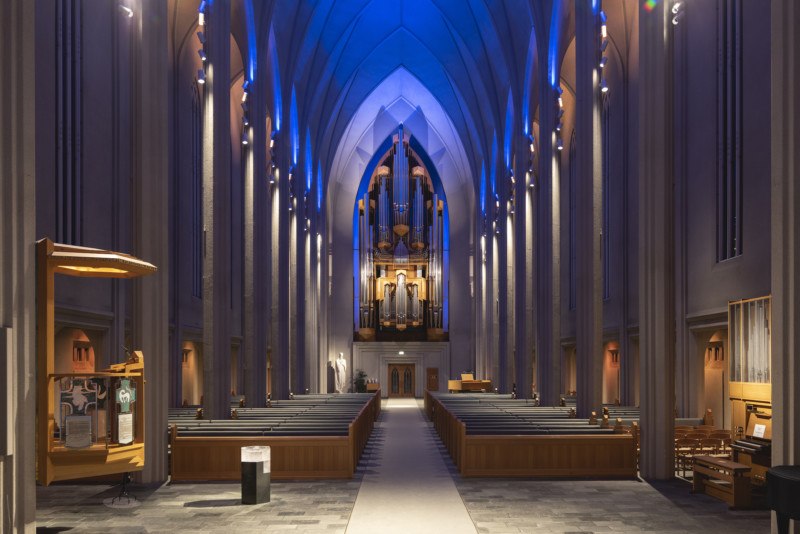
Fraunhofer Institute
When the Fraunhofer Institute for Photonic Microsystems in Dresden wanted to modernize the old lighting of a pedestrian bridge connecting two buildings, a thesis worker implemented a design that pays homage to their onsite R&D.
The Fraunhofer Institute for Photonic Microsystems (IPMS) is a leading international research and development service provider for electronic and photonic microsystems in the fields of smart industrial solutions, medical and health technology and mobility.
When the Institute decided to modernize the lighting on a pedestrian bridge connecting two buildings on its Dresden campus, they took the opportunity to absorb the task into trainee Jack Dylan Richter’s thesis work – supporting the completion of his training as an electronics technician for industrial engineering (the institute offers its trainees their own projects every year).
The IPMS pedestrian bridge was previously equipped with 21 T5 reflector lights that needed to be converted to LED. Seeking a spectacular design that would pay homage to the ground-breaking work done on-site, Richter opted for a running light in the colors of a semiconductor wafer such as those produced in their cleanrooms.
A semiconductor wafer is a thin and round slice of semiconductor material, usually made of silicon, that is used as the base for the production of electronic components such as microchips and integrated circuits. The infamous rainbow colors seen on a wafer are typically caused by a thin film interference effect, also known as thin film optics.
To reproduce this lighting effect, the 21 T5 reflector luminaires were directly replaced with Osram RGBW LED strips attached to aluminum brackets – supplied by the local lighting provider, nmd – Licht am Bau GmbH. The front of the bridge is glazed, and the opposite wall has a metallic surface against which the light shines at an angle of 45° – making for good visibility to the outside world.
‘The quartz layer of the wafer reflects a pastel light, which we wanted to show with the new lighting. A normal ribbon would have been too bright. The combination of Osram’s RGBW LED strips with Casambi control delivered the desired effect’ said Sebastian Sennewald, Marketing & Sales Manager at nmd – Licht am Bau GmbH.
‘Casambi was specified as the control solution owing to the reduced complexity and easy precision tweaking of lighting levels it offers. Four different light scenes were programmed:White for general lighting, green to represent the institute’s brand, as well as two running lights in intricate wafer colors.’
Although the buildings’ services otherwise run on KNX, staff were quickly trained by Sebastian and his team to use the Casambi application. The bridge lighting is switched on and off via the KNX bus, and the LED strips are controlled using Casambi. While nmd – Licht am Bau GmbH rebuilt the 21 lamps and prepared the light strips, Richter and the staff were able to program the installation and complete the wiring of all components independently.
Interested in learning more about Casambi? Drop us a note, and we’ll reach out to you:
Site
The Fraunhofer Institute for Photonic Microsystems
Location
Dresden, Germany
Lighting design and commissioning
nmd – Licht am Bau GmbH
Photographs
nmd – Licht am Bau GmbH




Share your work with us
If you have a Casambi project that you would like to publish at Casambi.com please click the button below and tell us a little bit more about the project. We’ll get back to you within two business days.


